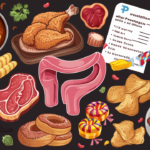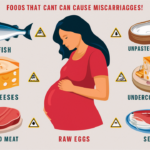There are some things in life that when they’re around we wish they weren’t there. And when they’re gone, we’re just glad that they left. For many of us, one of those things is fat. But your fat tissue is full of important biological molecules called lipids – that are great at storing energy in their chemical bonds. When the molecules are broken apart they release the energy stored in their bonds. We often refer to this process as “burning fat”. Continue reading till the end to learn about how weight loss works.
When You “burn fat” Where Does it go?
So, if you burn a lot of fat, and it’s not there anymore to hold your pants up or whatever, where did the mass go? It doesn’t just grow legs and walk away. It actually disappears into thin air! Turns out, you exhaled it.
Biologists at the University of New South Wales recently did a detailed research on where the mass of your fat goes after it’s burned in your body. And they found that for every ten kilograms of fat that you burn, you have to inhale 29 kilograms of oxygen. To metabolize or break down the fat and release its energy. And the process of breaking down that much fat produces 28 kilograms of carbon dioxide and 11 kilograms of water. Still doesn’t answer how weight loss works? Read the next paragraph and I promise you’ll learn how weight loss works.
You Emanate Fat Through your Skin and Breath!

So for every kilo of fat that you burn in your body, more than 80% of that mass is lost as carbon dioxide that you breathe out. The other 20% you lose as water in your urine or sweat. Or depending how hard you work out, your tears. So remember that the next time you’re huffing and sweating on a treadmill. Or walking your dog, or really doing anything that makes your body call on its energy reserves. You’re basically just emanating fat through your breath and your skin, but in a good way. Well now you know how fat/ weight loss works?
How to Lose Weight?
Imagine one pound of your own fatty flesh. So if you burn that amount of flesh, and that sounds kind of weird, but if you were to convert that into energy. You would get about 3500 Calories, which is quite a lot of energy. And in order for you to live and function, you need to burn energy. To keep your heart beating, all your organs going and just to move around.

But energy doesn’t come for free. So if you aren’t consuming enough calories you are going to burn that energy with your own fat. So a lot of diet books like to teach this 1 pound for 3500 calories rule. But the problem is its wrong.
Here is why.
Let’s say I eat 500 calories less a day. So after 1 week it would be 3,500 calories, and I would lose a pound, right? Because I’d have to burn it. Yeah, and if I stayed on this diet for a year I’d burn through 52 pounds. It’d be great! If you keep taking this thing. Well, after 2 years I’d lose 104, and after 10 years I’d lose 500 pounds, you know? So obviously, at some point this rule is going to break down.
Real Math behind Weight Loss
So to understand the real math behind losing weight, imagine a leaky bucket. You have some water in the bucket and that’s the amount of body fat or tissue in your body. And the leak represents the rate at which you are burning energy. In reality what you are doing is adding water at the top, that’s like eating food. And when you are in steady state the amount of water you add at the top exactly balances the amount of water you lose at the bottom.

If you are pouring in more water than it is leaking then you are going to gain weight. Now if you think about the physics of a leaky bucket, the more water you pour into the bucket the faster it’s gonna leak. So the leak rate scales with how big you are. And this is a well-known fact, that the larger you are, the more energy you burn. You’re going to burn more energy because it takes more energy just to move a larger mass. You have more tissue and just to keep that tissue going it takes more energy.
But, as you start to lose weight you start to get smaller and you burn less energy. And you start to metabolically adapt to your new diet. And so you are never going to lose weight at one constant rate. It is always going to curve from one steady state down to another.
New Rule
So, when you go on a diet, the 3500 calorie rule is the wrong rule. There is a new rule. The new rule is, for every ten calories you eat less, you lose a pound. But it will take you about 3 years or more to see the full effect of your diet, which is still pretty good. All you have to do is eat a hundred calories less, you lose ten pounds. So you should expect the diet to be extremely slow.
What’s Wrong with Rapid Weight Loss?

But the point is nobody wants a slow diet. We all want to lose 20 pounds for this summer. What’s wrong with just focusing on losing weight rapidly? The problem is weight loss is not a matter of few weeks or few months. If you want a sustainable weight loss you have to set realistic goals that you can comply with. Because you can’t go on a low caloric diet or restrict your carbs. Or refrain from your favorite food for the rest of your life. At some point you gonna wanna be back on a normal diet. And when you do that your weight will slowly creep up and a year or two later BANG! You are back where you were.
Conclusion
So the wisdom lies in setting goals that you can actually achieve even if that means you are losing weight slower than you desire. Still the good thing is the weight you lost will be sustainable. And if you want to keep that weight off patience is the key.
Because the best diet is the one you can comply with!











Your article helped me a lot, is there any more related content? Thanks!